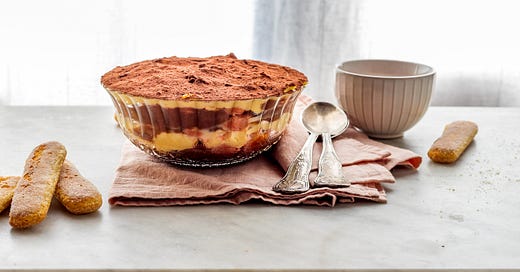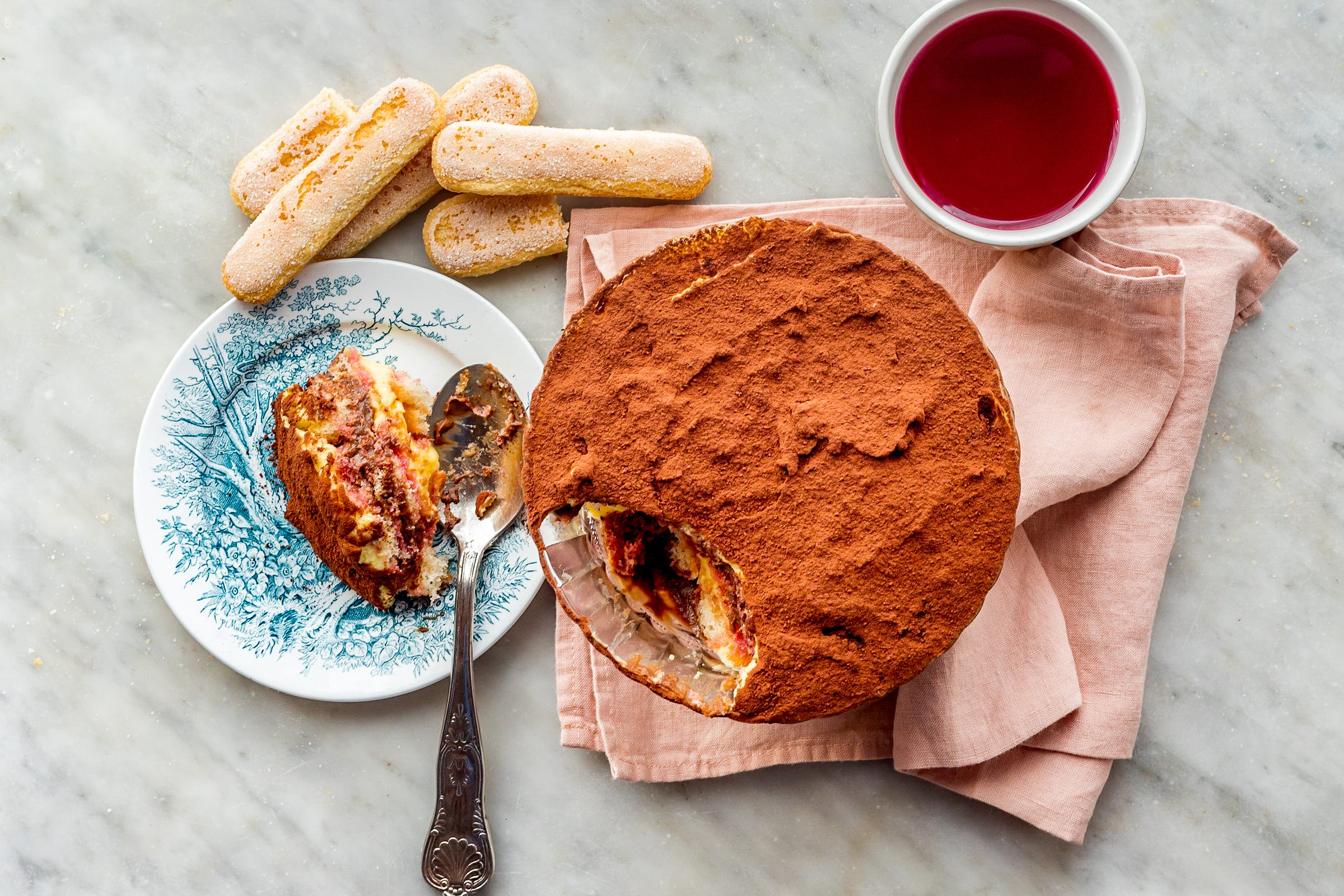Zuppa inglese, our January Cook-Along and Live Talk
We'll be making zuppa inglese, a Tuscan traditional trifle, but you can just join for a chat or pop in to say ciao!
I know this is the third email you receive from us this week, it won’t happen again! But we had so much to share, and since we aim to be as spontaneous as possibile, here we go along with the flow.
Tomorrow, SUNDAY the 22nd of January, we will meet at 9 pm CET - 3 pm EDT - 12 pm PDT to prepare together a zuppa inglese, a Tuscan traditional trifle with a long, story where legend and real facts mingle. As always it is a moment when we cook together, but you can join just to have a chat, a laugh, to ask questions, share stories, or simply listen while having a good cup of tea.
This is an event designed for those who subscribed to Letters from Tuscany: every month (except during august) we meet on line: we’re slowly building friendships, shared memories, and we’re definitely having lots of fun!
(If you are a paid subscriber, read till the end where you can find the link to join tomorrow’s Cook Along and Live talk behind the paywall.)
And now I’ll tell you why I love zuppa inglese and why this is a fixture of our cooking classes.
Zuppa inglese, the Tuscan Trifle
Sometimes, my grandma or my mum would indulge me and my sister for merenda. This is when they would prepare a classic dessert: a zuppa inglese. The trifle would be scooped out into small cups and we would eat it in a religious silence, sitting on the couch, licking our cups clean.
“Zuppa inglese” literally means “English soup.” But is the dessert really from England?
Both Emilia Romagna and Tuscany claim to be the birthplace of zuppa inglese, in the 16th century, inspired by the English trifle and turned into something more Italian. The trifle’s pound cake or Madeira cake was replaced with a lighter sponge cake, and its whipped cream with our custard.
Another story wants the zuppa inglese to be born in the mid-19th century, in the hills of Fiesole over Florence, where the Tuscan maid of a wealthy English family put together leftover biscuits, chocolate pudding, and custard from their afternoon tea to create a hearty dessert. I do like this second origin better, even if it is probably only a legend. It says so much about the propensity of Tuscan people for using leftovers in a creative way, turning them into another delicious treat.
The key ingredient of a traditional zuppa inglese is alchermes: a Renaissance spirit, a favorite liqueur of the Medici family, the Tuscan elixir for long life, a pick-me-up for fragile women. The bright crimson liqueur is still made today by the Santa Maria Novella Pharmacy in Florence, with the same recipe created in 1743, along with many artisanal and refined liqueurs.
Alchermes is infused with spices, time and tradition, and a handful of dried insects—cochineals, which give it its characteristic color and also its name. Open a bottle of alchermes and inhale: you will recognize cardamom, coriander seeds, mace, orange peel, star anise, and vanilla, then a subtle rose aroma.
If you make zuppa inglese in a transparent bowl, something I really love to do, you will see a colorful stack of layers: yellow vanilla custard; a darker chocolate custard; pinkish savoiardi (ladyfingers) dunked in alchermes.
If you can not find alchermes, you can either substitute it with a cherry brandy, which will approximate the flavor but miss the bright rose colour; or instead opt for coffee, which will produce a completely different result, more similar to a tiramisu, but still delicious.





